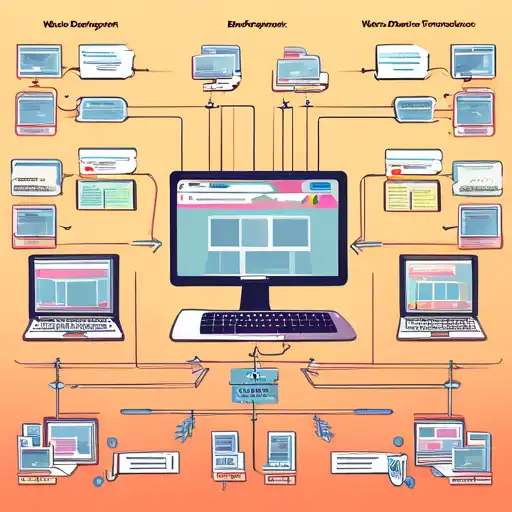Understanding Web Development Frameworks
In the ever-evolving world of web development, choosing the right framework is crucial for building efficient, scalable, and maintainable websites and applications. With a plethora of options available, developers often find themselves at a crossroads, trying to determine which framework best suits their project needs.
What Are Web Development Frameworks?
Web development frameworks are software libraries designed to support the development of web applications by providing a standard way to build and deploy them. They offer a foundation upon which developers can build, saving time and effort by eliminating the need to write code from scratch.
Types of Web Development Frameworks
There are primarily two types of web development frameworks: frontend and backend. Frontend frameworks, such as React and Angular, focus on the user interface and experience. Backend frameworks, like Django and Ruby on Rails, handle server-side operations, database interactions, and application logic.
Factors to Consider When Choosing a Framework
Selecting the right framework involves considering several factors to ensure it aligns with your project requirements and team expertise.
Project Requirements
Understanding the scope and requirements of your project is the first step. For instance, if you're building a single-page application (SPA), a frontend framework like Vue.js might be ideal. For complex backend operations, consider Node.js or Spring.
Community and Support
A strong community and robust support are invaluable for troubleshooting and learning. Frameworks with large communities, such as React and Django, offer extensive resources, tutorials, and forums.
Performance and Scalability
Performance and scalability are critical for applications expecting high traffic. Evaluate frameworks based on their efficiency and ability to scale. For example, Angular is known for its performance, while Ruby on Rails is praised for its scalability.
Popular Web Development Frameworks in 2023
Here's a look at some of the most popular web development frameworks this year:
- React: A JavaScript library for building user interfaces, known for its virtual DOM feature.
- Angular: A platform for building mobile and desktop web applications, offering a comprehensive solution.
- Vue.js: A progressive framework for building UIs, designed to be incrementally adoptable.
- Django: A high-level Python web framework that encourages rapid development and clean, pragmatic design.
Conclusion
Choosing the right web development framework is a decision that can significantly impact the success of your project. By considering factors such as project requirements, community support, and performance, you can select a framework that not only meets your current needs but also accommodates future growth. Remember, the best framework is the one that aligns with your project goals and team expertise.
